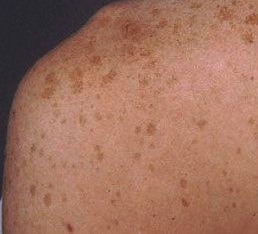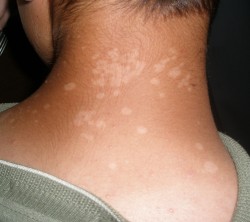Tips On How To Combat Effects of Summertime Sun
By Dr. Anita Saluja // July 14, 2013
KNOW HOW TO TREAT SUNBURN
BREVARD COUNTY • VIERA, FLORIDA — With summer upon us and the Space Coast one of the most pleasant destinations for summertime fun and recreation, it’s important to understand the effects of the sun on our skin and how to manage the consequences of a bit too much sun exposure.

We are delighted to welcome Dr. Anita Saluja, who practices dermatology, dermatologic surgery and cosmetic dermatology as a member of the Health First Medical Group, to share questions that she has encountered and addressed in her practice related to skin conditions that may result from a day in the sun.
Question: If I forgot my sunscreen and got sunburned, but feel well otherwise except that my skin is painful, red and I have a few small blisters, what should I do at home?
Dr. Saluja: This is mild sunburn and can be treated at home. It is best to use cool cloths on sunburn and take cool showers. One percent hydrocortisone and aloe vera may also soothe. Leave your blisters alone unless they are rubbing on clothing. If they are getting irritated, apply over the counter antibiotic ointment and a bandage. Drinking fluids helps prevent dehydration. Nonsteriodal anti-inflammatory drugs such as aspirin and ibuprofen will help your pain. Eventually, peeling, which is normal, will occur as the skin heals.

Question: When my sunburn resolved I was left with light brown flat “liver spots” on my shoulders and face. Should I be worried?
Dr. Saluja: First off, liver spots have nothing to do with the liver. They are sun spots or age spots. The medical terms are solar lentigos or lentigines. These are not cancerous and do not have to be treated. If you find these cosmetically unsightly, the spots can be removed with liquid nitrogen or intense pulsed light treatments. If any of your spots look different than the others, such as multicolored, consult your dermatologist.
Question: After a visit to the beach, there are lightly discolored, almost pink, slightly dry patches on my chest, upper back, and upper arms. Is this fungus?

Dr. Saluja: Most likely, it is. Tinea versicolor is the medical term for this common skin condition, which is caused by skin yeast that grows too much, resulting in an uneven skin color and scaling. It occurs more commonly in climates such as ours, with high temperatures and humidity. Usually, tinea versicolor is treated with anti-fungal lotions or shampoos, and sometimes pills if it’s severe. If your condition is mild, you could try over the counter Nizoral or Selsun Blue shampoos, applying from your ears to your knees for 10 minutes, and then rinsing off, for a total of 2 weeks. If this seems too high maintenance, it’s best to use a prescription.
Question: Should the use of Retin-A be stopped or limited during the summer? Does it really increase the risk of sunburn and why?
Dr. Saluja: Retin-A (tretinoin) thins the top layer of the skin – called the epidermis – which thickens over time due to sun damage, and this can make you more prone to sunburns. However, Retin-A thickens the dermis and stimulates the collagen fibers, which have been damaged by the sun. This is beneficial, so try not to stop the Retin-A, but focus on protecting your skin from the sun by wearing sunblock SPF30 or higher, sunglasses, and a hat.

Question: What about vitamin D? Isn’t the sun an important source?
Dr. Saluja: Most researchers are currently recommending 800-1000 IU of vitamin D. There are variations in how individuals react to sunlight and variations in seasons, so rules on this are difficult to make. Some guidelines are that 10-15 minutes of sun exposure on the hands, arms, and face prior to 10 a.m. or after 3 p.m., 3-4 times a week should give you enough vitamin D if you’re fair-skinned. After that, be sure to wear your sunblock. The American Academy of Dermatology suggests getting your vitamin D through a healthy diet and vitamin supplements.
Question: When active or wearing short sleeves, why is my skin bruising more easily?
Answer: With sun damage and age, the skin becomes thinner and the small blood vessels are less protected from minor injury. For example, even bumping against a piece of furniture may result in a large bruise. Blood thinning medications can contribute. There is no good treatment for the bruises. If your bruising involves areas other than your lower arms and lower legs or you are concerned, you should see your primary care physician.

Question: I’m trying to get the skin on my legs ready for swim season. What can I do?
Dr. Saluja: If you have unwanted hair (and it’s not very light colored), consider laser hair removal for permanent hair reduction – you can avoid stubble and razor bumps, as well as save time. Initially, it may take 6-8 treatments every 4-8 weeks, but it is well worth it! If you are bothered by spider veins, sclerotherapy is the treatment for you. It is the “gold standard” in treatment. Tiny injections of a solution are given under bright light and magnification to irritate the inner lining of the vein, resulting in its closure.
Question: I have a pink bump that has been growing over the last four weeks, should I see my dermatologist?
Dr. Saluja: Absolutely. A growing bump, blemish, or sore, especially if it is pink in color, and persists like that, needs to be evaluated. Most often, it will be biopsied to rule out skin cancer. A biopsy is a simple procedure that usually takes only a few minutes, so that the lesion can be examined under the microscope and diagnosed.
ABOUT THE AUTHOR

Dr. Anita Saluja is a graduate of The University of Michigan School of Medicine where she was a member of the prestigious Alpha Omega Alpha Medical Honor Society. Dr. Saluja completed her residency in dermatology specialty training at Emory University in Atlanta, GA, and is board-certified in dermatology by the American Board of Dermatology. She has practiced dermatology, dermatologic surgery and cosmetic dermatology with MIMA (now Health First Medical Group) in the Viera office since 2001. Her areas of interest include sun damaged skin, skin cancer, and cosmetic dermatology. Dr. Saluja is a working mother of two and, additionally, is very active in Brevard community organizations and projects. Dr. Saluja can be contacted at 321-757-5141 or CLICK HERE.












